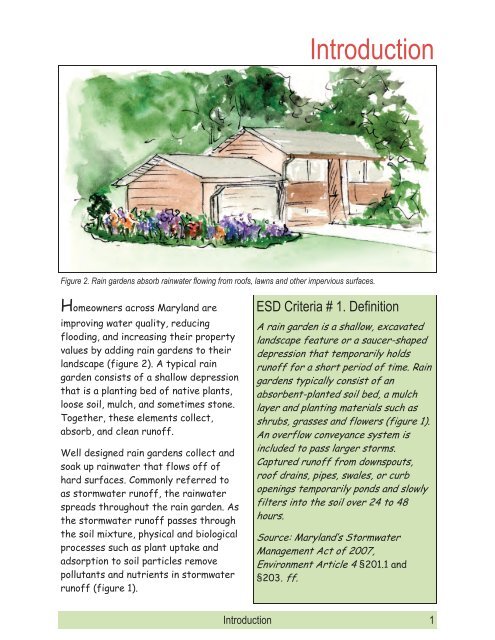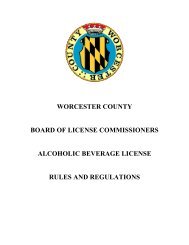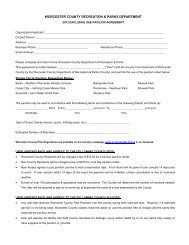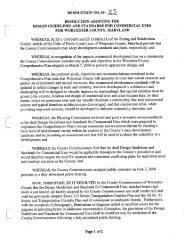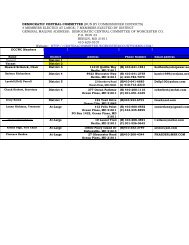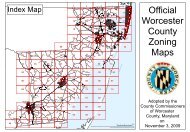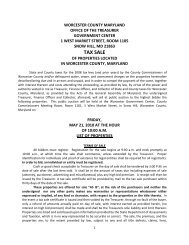Rain Gardens Across Maryland - Worcester County
Rain Gardens Across Maryland - Worcester County
Rain Gardens Across Maryland - Worcester County
- No tags were found...
Create successful ePaper yourself
Turn your PDF publications into a flip-book with our unique Google optimized e-Paper software.
IntroductionFigure 2. <strong>Rain</strong> gardens absorb rainwater flowing from roofs, lawns and other impervious surfaces.Homeowners across <strong>Maryland</strong> areimproving water quality, reducingflooding, and increasing their propertyvalues by adding rain gardens to theirlandscape (figure 2). A typical raingarden consists of a shallow depressionthat is a planting bed of native plants,loose soil, mulch, and sometimes stone.Together, these elements collect,absorb, and clean runoff.Well designed rain gardens collect andsoak up rainwater that flows off ofhard surfaces. Commonly referred toas stormwater runoff, the rainwaterspreads throughout the rain garden. Asthe stormwater runoff passes throughthe soil mixture, physical and biologicalprocesses such as plant uptake andadsorption to soil particles removepollutants and nutrients in stormwaterrunoff (figure 1).ESD Criteria # 1. DefinitionA rain garden is a shallow, excavatedlandscape feature or a saucer-shapeddepression that temporarily holdsrunoff for a short period of time. <strong>Rain</strong>gardens typically consist of anabsorbent-planted soil bed, a mulchlayer and planting materials such asshrubs, grasses and flowers (figure 1).An overflow conveyance system isincluded to pass larger storms.Captured runoff from downspouts,roof drains, pipes, swales, or curbopenings temporarily ponds and slowlyfilters into the soil over 24 to 48hours.Source: <strong>Maryland</strong>’s StormwaterManagement Act of 2007,Environment Article 4 §201.1 and§203. ff.Introduction1


